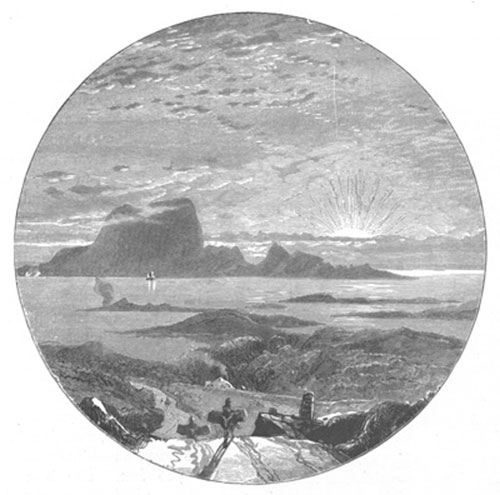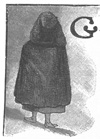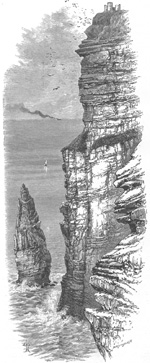Connemara - Irish Pictures (1888)
From Irish Pictures Drawn with Pen and Pencil (1888) by Richard Lovett
Chapter VII: Connemara
« Previous Page | Book Contents | Next Page »
ALWAY is the proper starting-point for excursions into the splendid mountain country of Connemara; but as we closed our last chapter at Kilkee, it may be well to resume our travels from that point. The drive from Kilkee to Miltown Malbay runs near the coast, affording here and there some good views, but chiefly interesting because it traverses a fairly good agricultural district of County Clare, and enables the traveller to see for himself what kind of land the Clare peasants have to work, and what are the external appearances of one of the great centres of agrarian disturbance. The West Clare Railway is now open to Miltown Malbay, and the traveller pressed for time can go via Ennis direct by rail to Galway. Much the more interesting route is to keep along the coast, visiting the cliffs of Moher, then striking inland to Lisdoonvarna, and crossing Galway Bay from Ballyvaughan.
There are several famous stretches of cliff scenery on the west coast of Ireland—Moher, Croghan on Achill Island, the cliffs between Ballina and Belmullet, Horn Head, and Slieve League. The last is the most picturesque, and impresses most powerfully the imagination, but the connoisseur should make a point of inspecting them all. The cliffs of Moher extend for several miles along the coast of Clare, reaching in one or two parts an altitude of from 600 to 700 feet. The best time to see them is during a westerly gale. On a clear day the view from the tower shown in the engraving is very comprehensive, extending over the Connemara Highlands northwards, and westward and southward from the Isles of Arran at the mouth of Galway Bay to Loop Head, the extreme point of the promontory forming the north shore of the Shannon estuary.
Lisdoonvarna is a spa, and those wishful to do so can there partake of either chalybeate or sulphur water, and at the same time study the habits of those who frequent the Irish Cheltenham.



